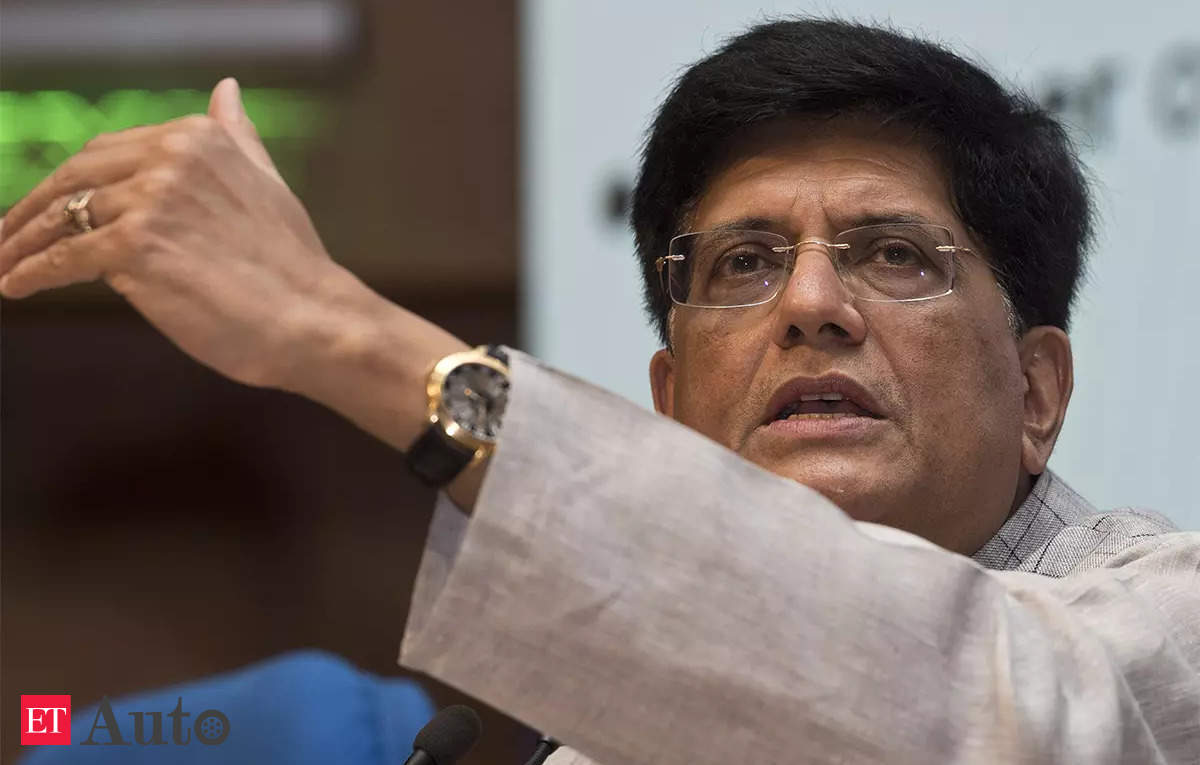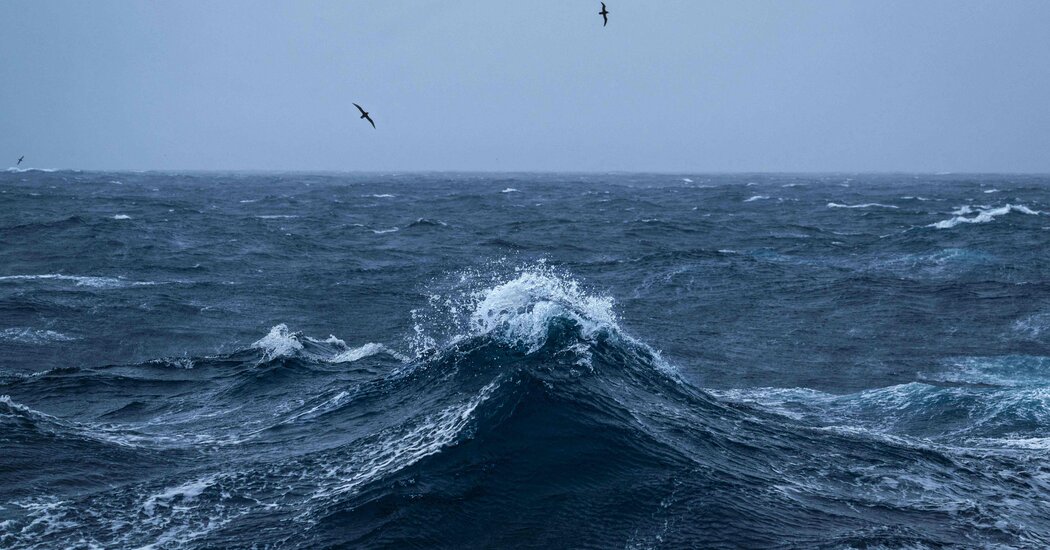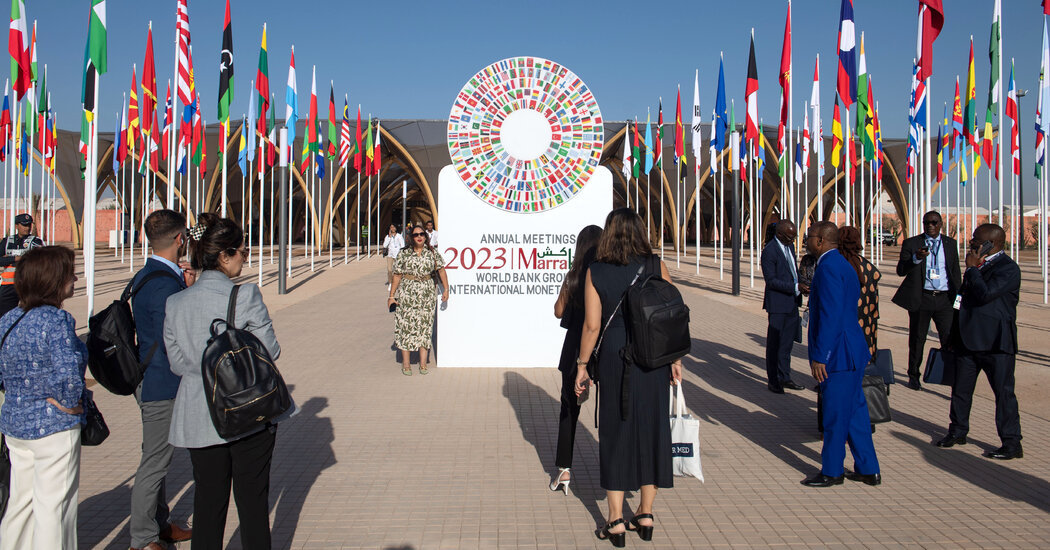This article is part of our special section on the Climate Forward event that will include policy and climate leaders from around the world.
When delegates from countries around the world meet this week at the United Nations, they will begin to ratify a landmark agreement for environmental conservation, climate-change mitigation and biodiversity protection that is known as the High Seas Treaty.
The treaty outlines how the global community can protect, conserve, and benefit equitably from the ocean and its resources. One of its major achievements is the possibility of marine-protected areas, where commercial activities would be banned or limited, in international waters.
The United States will not be among the ratifiers (it has not yet adopted the original treaty under which this agreement was negotiated) but Monica Medina, a former assistant secretary of state for oceans and international environmental and scientific affairs under President Biden and the current president and chief executive of the Wildlife Conservation Society, participated in the negotiations and addressed the U.N. in 2022 about the urgent need and moral obligation to protect the oceans.
In an interview last month, Ms. Medina, who also worked for the National Oceanic and Atmospheric Administration under Presidents Bill Clinton and Barack Obama, spoke about the treaty’s accomplishments and why it should matter to everyone. She also emphasized the effects of greenhouse-gas emissions on the ocean and how ensuing climate change will affect both people and the planet, also among the topics being discussed by leaders in business, science and policy during The New York Times Climate Forward event on Thursday.
Can you explain why the High Seas Treaty is so consequential, both in terms of environmental protection and international law?
This is a really important development in global international law because the oceans beyond national jurisdiction, outside of 200 nautical miles from any coastline, are a really open space in a way. It’s sort of like a field that nobody owns and everybody uses but no one really takes care of.
This particular agreement allows the world to come together and agree to create protected areas, kind of like parks, out in the high seas.
It also allows for a process for sharing all of the really cool information and resources out there, especially genetic information that can be found in those areas.
Before now, it was just a treasure hunt and nobody had to share any of it, but those areas don’t belong to any one country, and that sort of “finders keepers” mentality was going to cause a kind of gold rush of exploitation without anyone knowing what was out there and without the world benefiting from it.
The United States is not part of this treaty. What are the implications of that?
We adhere to it as if we were a member, and we consider most of the defining parts of it to be international law. But there are some that we don’t, and that holds us back.
For example, the U.N. is working on regulations for deep-sea mining, and that couldn’t be a more important negotiation. We can’t participate in the regulatory discussions — we sit as an observer like nonprofit organizations, and the shame of it is, if we were a member, we’d have a vote and a permanent seat of the security council for seabed mining and help govern it forever.
We are not able to really take the benefit of these agreements — we get all of the burdens but none of the benefits by not ratifying it.
Why should people care about a treaty for protecting and conserving the high seas, which are so far away, even from people who live on the coast?
The ocean provides half the oxygen that we breathe, it’s a huge source of food, and it connects everyone and everything on the planet. We say there are different oceans, but there is only one big body of water.
It ties people together in ways that they aren’t really aware of. The ways that ocean currents move affect our day-to-day lives. For example, the Gulf Stream works to keep Northern Europe warm and the tropics more temperate, and that conveyor belt of a current is really important for food production but also for these great big weather systems that actually have made our climate a lot less erratic in the past.
But, if they break down now because of the melting of the ice sheets in Greenland and Antarctic ice sheets, creating sea-level rise and changing these basic weather patterns — they will really make everyone’s lives different in the future.
How does this treaty help address the effects of climate change?
Climate change is really stressing the ocean, and we are seeing that here in the U.S., with things like the coral reefs in Florida bleaching terribly, and many of those had just been replanted after a previous bleaching event. We have the technology to help restore these areas, but the ocean is warming so fast that it’s really hard to do that.
With these protected areas, we could take some of those least-impacted places and try to hold onto the nature that is still doing well, so that when an ocean heat wave happens, the ocean can restore itself more easily.
Obviously things change, but it’s easier when the ecosystems aren’t being impacted by pollution and direct discharge of trash, or are not being overfished, which is a big problem, and these protected areas will help make sure that’s the case.
We all have to adapt and prepare. People who haven’t really felt the brunt of the force of the oceans are increasingly in harm’s way, and we all really need to be learning more about oceans and paying more attention to them and how they’re changing.
We need as much life and vibrancy in the ocean that we possibly can have, because it’s a big part of this great big planetary bubble. Seventy percent of the planet is ocean, so we need to make more places more resilient for the climate change that is underway and that will come.











